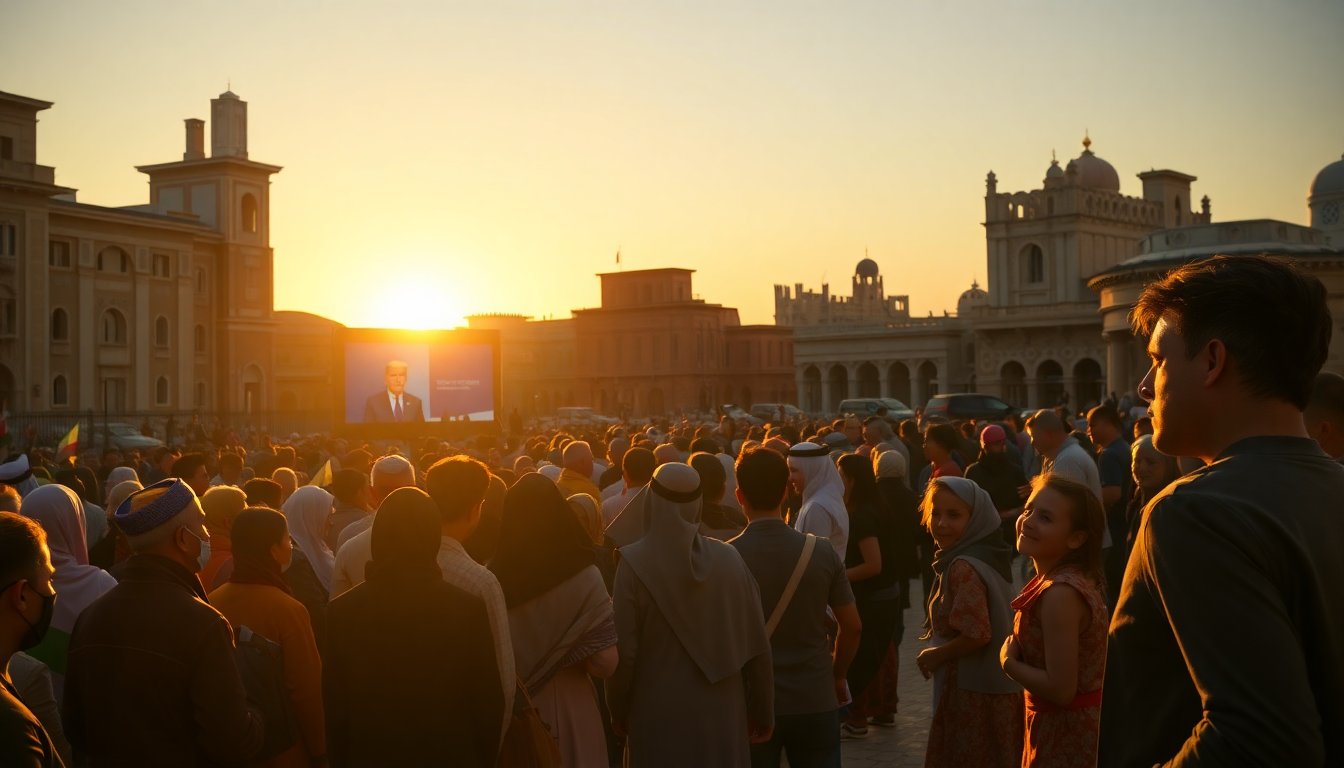Table of Contents
On a significant Monday, U.S. President Donald Trump embarked on an ambitious journey to the Middle East, aiming to solidify the end of hostilities between Israel and Hamas. This trip coincided with a long-anticipated swap of prisoners and hostages, marking a crucial moment in the fragile ceasefire that halted the violent clashes. As celebrations erupted in various regions, a layer of skepticism loomed over the prospects of lasting peace.
Trump’s itinerary included a prominent speech at the Knesset in Jerusalem and participation in a global summit in Egypt. His visit was seen as a pivotal step toward reaffirming his commitment to fostering peace in a region long plagued by conflict.
The evidence
In the early hours of his visit, Trump addressed the members of the Knesset, heralding the day as a new dawn for the Middle East. The enthusiastic reception included chants of his name and standing ovations from lawmakers, some sporting hats that playfully echoed his campaign slogan, rebranded to declare him as the “Peace President.”
During his speech, Israeli Prime Minister Benjamin Netanyahu extolled Trump as “the greatest friend Israel has ever had in the White House,” and pledged to collaborate on future peace endeavors. This mutual admiration was palpable, with both leaders expressing confidence in achieving lasting peace together.
A controversial call for pardons
In an unexpected twist, Trump called for the president of Israel to consider pardoning Netanyahu, who is currently facing corruption charges that have been overshadowed by the ongoing conflict. This moment highlighted the intertwining of politics and diplomacy, as Trump took the opportunity to express gratitude towards his supporters and criticize previous Democratic administrations.
The reconstruction
Following his engagements in Israel, Trump traveled to Sharm el-Sheikh in Egypt, where he met with President Abdel Fattah el-Sisi. Here, they signed a pivotal document that officially concluded the hostilities in Gaza. Trump emphasized Egypt’s vital role in mediating the ceasefire, acknowledging the challenges that lay ahead.
The international summit that followed drew representation from nearly three dozen countries, including significant players from both Europe and the Middle East. Alongside leaders like Turkish President Recep Tayyip Erdogan and Qatari Emir Tamim bin Hamad al-Thani, Trump signed what he described as a foundational document for Gaza’s future. However, the specifics of the agreement were not disclosed.
Responses from global leaders
Among the attendees was Palestinian leader Mahmoud Abbas, and Canadian Prime Minister Mark Carney, who Trump mistakenly referred to as “Mr. President.” Carney later expressed optimism about the summit on social media, indicating a focus on securing peace and humanitarian aid for the region.
Despite the celebratory atmosphere, Netanyahu chose not to attend the summit, citing proximity to a Jewish holiday. Reports suggested that Erdogan’s potential refusal to land in Egypt if Netanyahu were present influenced this decision, revealing the complex diplomatic dynamics at play.
Challenges ahead
The recent conflict erupted on October 7, 2023, when Hamas militants executed a surprise attack that claimed the lives of approximately 1,200 individuals, primarily civilians. The subsequent two years of warfare devastated the Gaza Strip, leading to a humanitarian crisis characterized by widespread famine and significant casualties among Palestinians.
Trump’s itinerary included a prominent speech at the Knesset in Jerusalem and participation in a global summit in Egypt. His visit was seen as a pivotal step toward reaffirming his commitment to fostering peace in a region long plagued by conflict.0
Reconstruction and future implications
Trump’s itinerary included a prominent speech at the Knesset in Jerusalem and participation in a global summit in Egypt. His visit was seen as a pivotal step toward reaffirming his commitment to fostering peace in a region long plagued by conflict.1
Trump’s itinerary included a prominent speech at the Knesset in Jerusalem and participation in a global summit in Egypt. His visit was seen as a pivotal step toward reaffirming his commitment to fostering peace in a region long plagued by conflict.2


